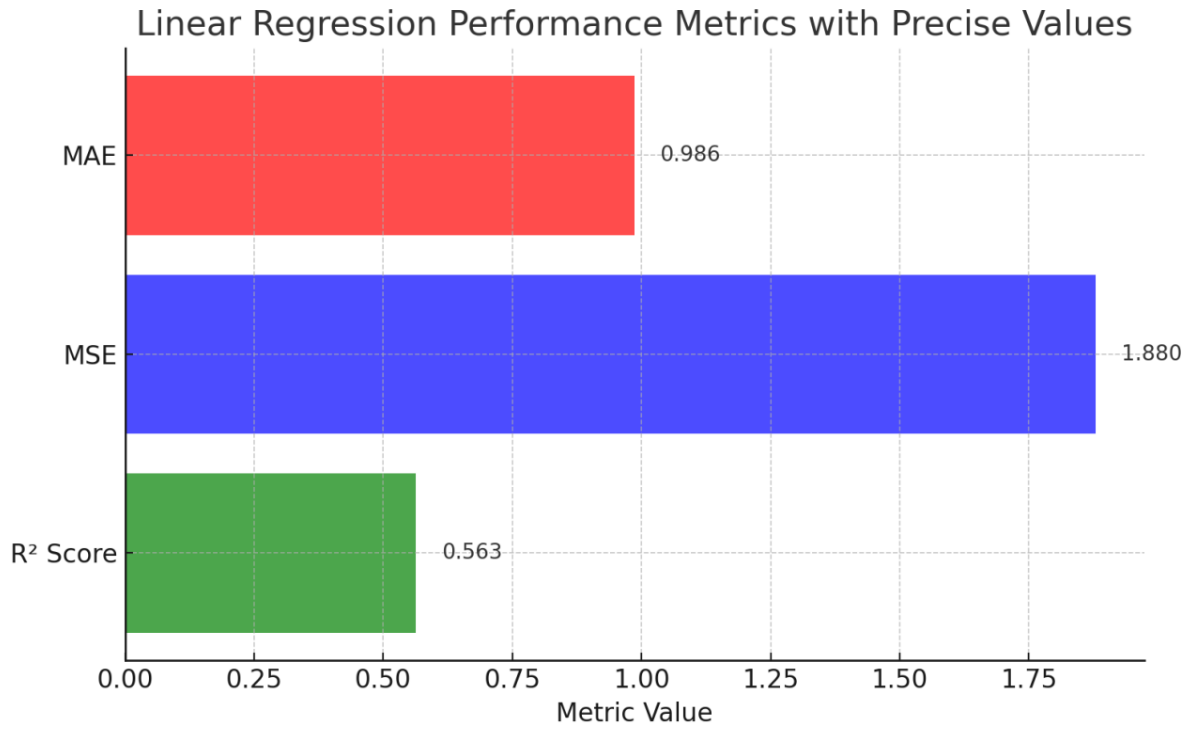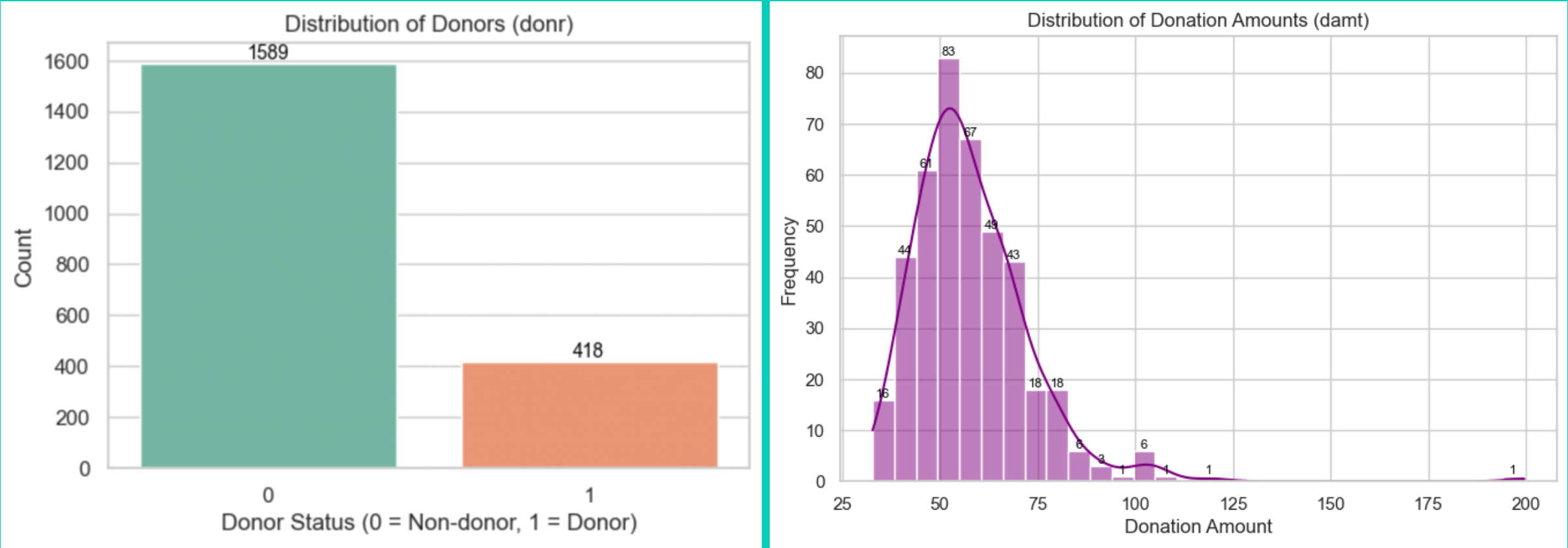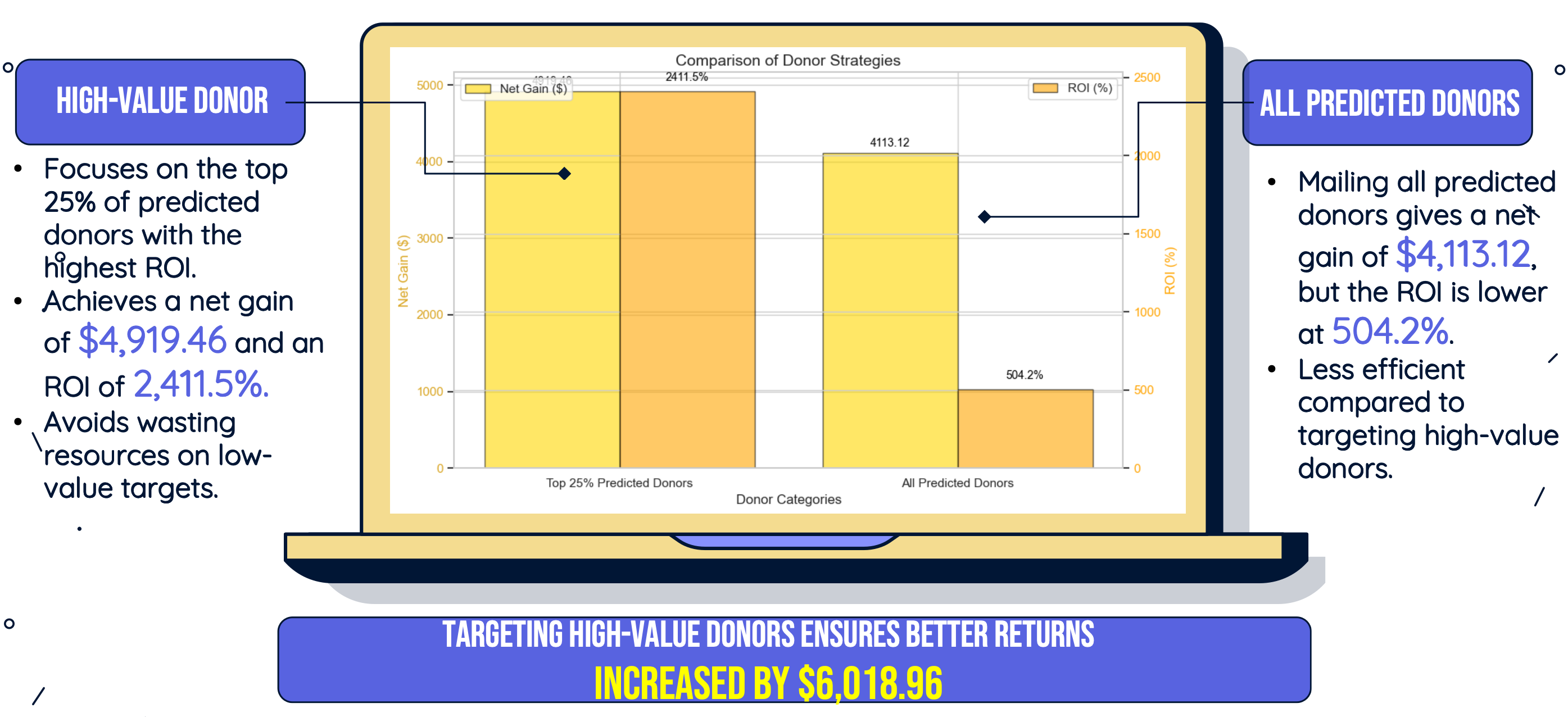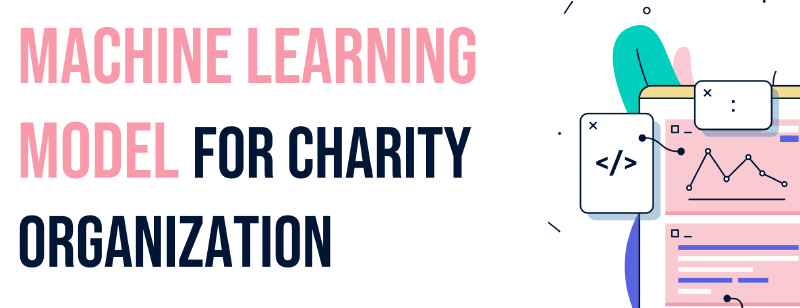Project Overview
This project applies machine learning to help a charity organization optimize its direct mail fundraising strategy, reducing cost while maximizing return on investment. The goal was two-fold:
- Classify potential donors (who will donate)
- Predict donation amounts for identified donors
Model Strategy
Two separate models were created:
1. Random Forest Classifier
- Predicts whether a person will donate (
donr = 1/0) - Achieved 88.85% accuracy on the test set
- Identified 408 donors out of 2007 samples
2. Linear Regression Model
- Predicts donation amount (
damt) fordonr = 1 - Achieved R² = 0.56 and MAE = $0.99
- Accurate, cost-efficient way to forecast campaign returns
Data Insights
- Features grouped by: demographics, wealth, donation history
- Strong predictors: lifetime giving (
lgif,rgif), property value (avhv), income (incm) - Most monetary values were right-skewed → normalized/scaled during preprocessing
- Heatmaps showed low correlation between wealth & donation, confirming need for advanced models
Model Development
- Tools: Python, Pandas, scikit-learn
- Preprocessing:
- Removed irrelevant features (
ID,damt,donr) - Feature scaling with StandardScaler
- Used separate training/test sets
- Removed irrelevant features (
- Pipeline:
- Classification first (filter donors)
- Then regression on predicted donors only
Business Value
💡 Strategy 1: Focus on Top 25% Predicted Donors
- 102 donors selected
- Avg donation: $50.23
- ROI: 2,411.5%
- Net profit: $4,919.46
💡 Strategy 2: Mail to All 408 Predicted Donors
- Avg donation: $12.09
- ROI: 504.2%
- Net profit: $4,113.12
Traditional blanket mailing: Net loss of $1,099.50
Results
- Classification Model: Random forest - due to its ability to handle complex feature interactions and better accuracy
- Prediction Model: Linear Regression - simplicity, interpretability, and efficiency in modeling relationships between predictors and the target variable

- Predict the donation amounts (damt) for donors identified through the classification model
- Provide accurate predictions of donation amounts to optimize resource allocation and enhance the charity’s return on investment

- The proportion of donors in the dataset is low, with the majority of the sample being non-donors (1589) and only a small proportion of donors (418)
- Most of the donations are in the lower range ($0-50), with only a few donations in the higher range.

Business Problem Solution
By targeting only high-value predicted donors:
- Reduced mailing cost from $4,014 to $204
- Improved net profit by over $6,000
- Demonstrated how ML can guide strategic decision-making in the nonprofit sector

📎 PDF Slide Deck: Charity Prediction slides
💻 Code Repository: Charity Prediction Code
